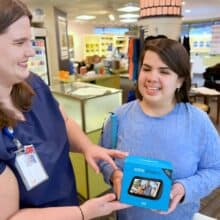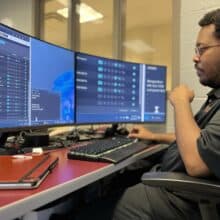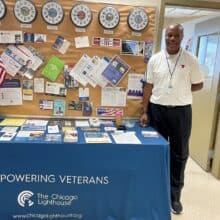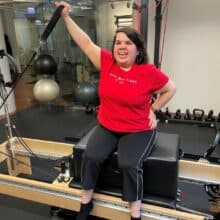Why Teachers for Students with Visual Impairments Are So Important
Throughout my childhood, I attended mainstream classes in the public school system. This meant I could learn math, science and social studies alongside my peers who could see. At the same time, I received services from teachers of the visually impaired and orientation and mobility specialists. They taught me how to read and write Braille, use special technology for my classes and travel with a white cane. These teachers would also order my textbooks and transcribe class handouts into Braille, so I could participate in my mainstream classes.
During my years in elementary and junior high, I received this specialized instruction in a vision resource room with other blind and visually impaired children. Without a doubt, this allowed me to receive the individualized, one-on-one assistance I needed from my teachers to learn these critical skills. Learning alongside other students with visual impairments also gave me a sense of camaraderie because our vision loss meant we could all relate to each other’s challenges and successes. By the time I entered high school, I received these services from an itinerant teacher, who would go to my school several times a week to work with me and other visually impaired students.
Recently, I read this article about the ongoing shortage of teachers for the visually impaired in Illinois. Over the years, the number of these professionals has significantly decreased, thereby causing this shortage. If this trend continues, current and future generations of students who are blind or visually impaired will no doubt be negatively impacted. Many argue that students with disabilities should be fully mainstreamed and included in their home districts. As someone who benefited from mainstream education, I think this is a valid point. Going to classes with sighted peers provided me with invaluable social skills and the incredible opportunity to educate others about disabilities (I was the only blind student in my classes, so naturally my peers were curious to learn about Braille and the special technology I use.) However, I believe that having the support of a teacher of the visually impaired is imperative for students with vision loss.
Michael Hansen, who is blind and now works as a call center agent at The Chicago Lighthouse, agrees. He attended his local elementary school for several years, but says he found it very difficult being the only blind student in the entire school. This all changed when he began attending a program which offered a resource classroom and services for students who are blind or visually impaired. Although his bus ride to and from the school was about an hour each way, he says he “wouldn’t have done it any other way.” Being in this program provided Michael with both a mainstream education, while receiving the supports and services he needed due to his visual impairment.
I consider myself extremely fortunate to have received both the opportunity to attend classes with my sighted peers, while at the same time learning the skills necessary for me to become an independent and successful blind person. This was thanks to my teachers of the visually impaired and orientation and mobility instructors. The assistance these professionals provide is invaluable to students with vision loss. I sincerely hope more educators will consider the field of blindness and visual impairment for their future careers. This is an extremely rewarding career that will enable blind and visually impaired individuals to live successful and independent lives.

Sandy Murillo works at The Chicago Lighthouse, an organization serving the blind and visually impaired. She is the author of Sandy’s View, a bi-weekly Lighthouse blog about blindness and low vision. The blog covers topics of interest to those living with blindness and vision impairments. Being a blind journalist and blogger herself, Sandy shares her unique perspective about ways to live and cope with vision loss.





